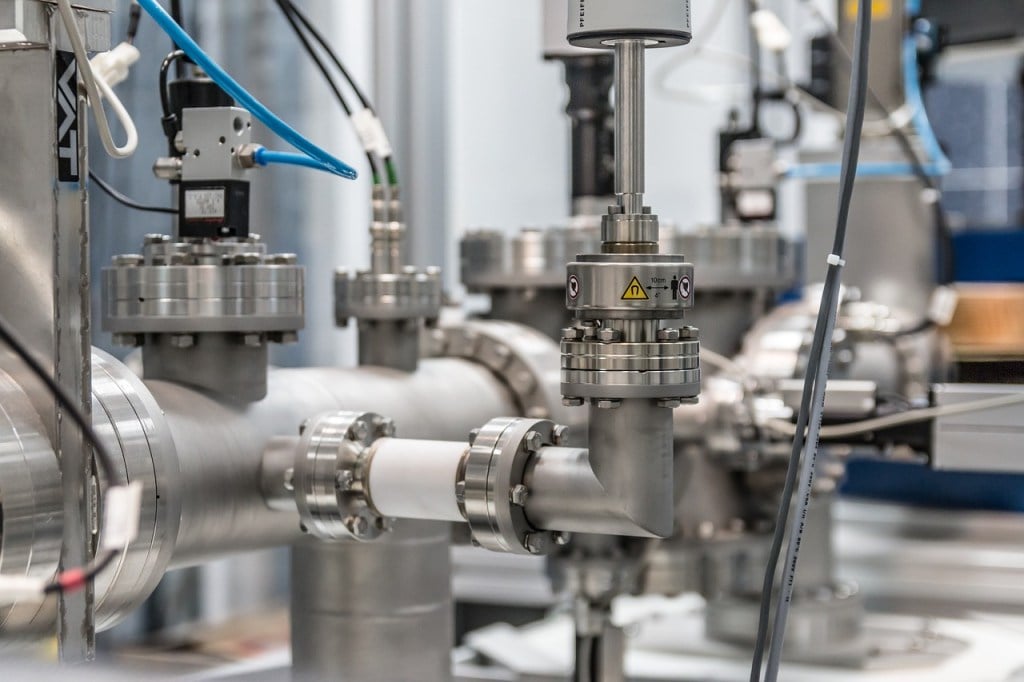Types of Heat Transfer
Heat transfer refers to the movement of thermal energy from one place to another. There are three main ways that heat can be transferred: conduction, convection, and radiation.
- Conduction: Conduction is the transfer of heat through a solid material by the collision of atoms and molecules. When an object is heated, its atoms and molecules vibrate and bump into their neighboring atoms and molecules, transferring some of their energy. This process continues until the heat is transferred throughout the entire object.
- Convection: Convection is the transfer of heat through a fluid (such as a gas or a liquid) by the movement of the fluid itself. When a fluid is heated, it becomes less dense and rises, while cooler, denser fluid falls. This creates a circular flow of the fluid, known as a convection current, which helps to distribute the heat throughout the fluid.
- Radiation: Radiation is the transfer of heat through space by electromagnetic waves. All objects with a temperature above absolute zero emit thermal radiation, which travels through the air or through a vacuum until it reaches another object. The amount of heat transferred by radiation depends on the surface temperature of the object, the distance between the objects, and the surface area of the objects.
Heat transfer is an important concept in many fields, including thermodynamics, engineering, and physics. It is used to understand and predict the behavior of systems and materials under different conditions, and to design systems and devices that are efficient at transferring or dissipating heat.
Heat Transfer and Temperature Difference
Heat transfer occurs as a result of a temperature difference between two objects or systems. When two objects or systems are brought into thermal contact, heat will flow from the hotter object or system to the cooler one until their temperatures become equal. This is known as thermal equilibrium.
The rate of heat transfer between two objects or systems depends on several factors, including the temperature difference between them, the nature of the materials involved, and the presence of any intervening barriers or insulation. The greater the temperature difference, the faster heat will be transferred. The properties of the materials also play a role: materials that are good conductors of heat, such as metals, tend to transfer heat more efficiently than materials that are poor conductors, such as insulation or air.
Finally, the presence of insulation or other barriers can slow down the rate of heat transfer by reducing the surface area of contact between the objects or systems, or by providing a layer of material that is a poor conductor of heat.
The Standard Heat Transfer Equation
The heat transfer equation is a mathematical expression that describes the rate at which heat is transferred from one place to another. The most common form of the heat transfer equation is known as the heat conduction equation, and it is used to calculate the rate of heat transfer through a solid material.
The heat conduction equation can be written as:
Q = kA(dT/dx)
where:
Q is the rate of heat transfer (in watts) k is the thermal conductivity of the material (in watts per meter per degree Celsius) A is the cross-sectional area of the material (in square meters) dT/dx is the temperature gradient (in degrees Celsius per meter)
The thermal conductivity (k) of a material is a measure of its ability to conduct heat. It is determined by the nature of the material and its microstructure. Materials with high thermal conductivities, such as metals, tend to conduct heat more efficiently than materials with low thermal conductivities, such as insulation or air.
The temperature gradient (dT/dx) is a measure of the change in temperature over a given distance. It is calculated by dividing the difference in temperature between two points (dT) by the distance between them (dx). The greater the temperature gradient, the faster heat will be transferred through the material.
The heat conduction equation is used to calculate the rate of heat transfer through a solid material under steady-state conditions, meaning that the temperature of the material is constant over time. It can be used to predict the temperature distribution within a material, or to determine the amount of heat that must be added or removed from a material to maintain a certain temperature.
Calculating Heat Transfer in Water or Hydronic Systems
Q = 500 x GPM x dT
In this equation, Q is the rate of heat transfer in BTUs per hour (BTU/hr). GPM stands for gallons per minute, and it represents the flow rate of the water. dT is the temperature difference between the inlet and outlet of the water, in degrees Fahrenheit.
The coefficient 500 in the equation is a constant that takes into account the properties of the heating source and the characteristics of the system, such as the size and type of heating element and the material and size of the pipes. It is used to convert the flow rate and temperature difference into the desired units of heat transfer.
To use this equation, you would need to know the flow rate of the water and the temperature difference between the inlet and outlet. You can then calculate the rate of heat transfer by multiplying these values by the coefficient 500. For example, if the flow rate of the water is 10 GPM and the temperature difference is 20 degrees Fahrenheit, the rate of heat transfer would be 500 x 10 x 20 = 10,000 BTU/hr.
This equation is often used in the design and analysis of water heating systems, such as boilers, hot water heaters, trench heating, and radiant heating systems. It can be used to calculate the amount of heat that must be added to the water to maintain a certain temperature, or to determine the size and capacity of the heating system needed for a given application.
If you need help designing your heating systems, give Siwa a call.





